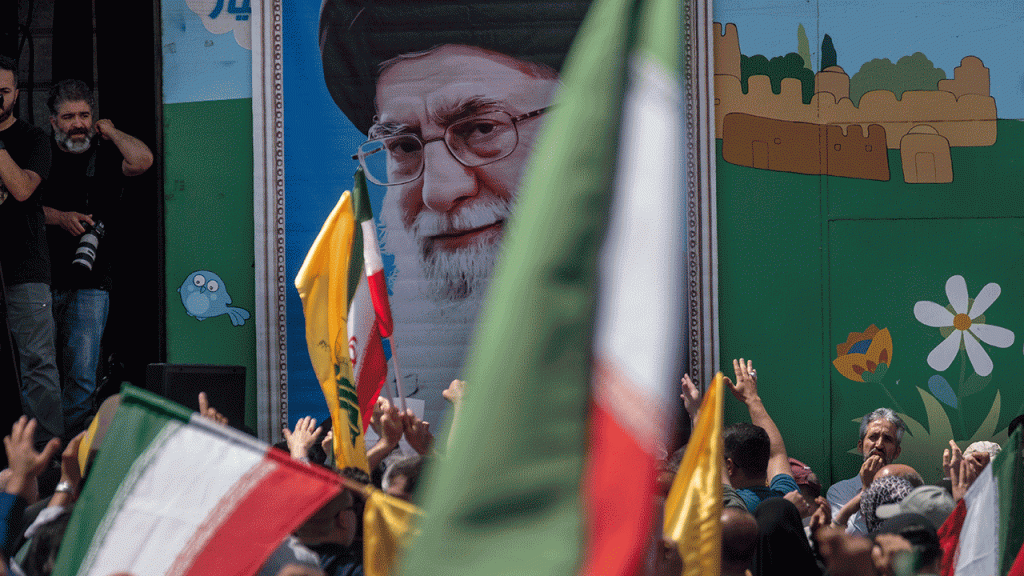Tensions between the United States and Iran have escalated significantly following President Donald Trump’s recent military strikes on Iranian nuclear sites. Reports indicate that Iranian Supreme Leader Ayatollah Ali Khamenei has remained out of sight, complicating potential diplomatic negotiations. These developments have put the Biden administration on high alert, as the U.S. military intensifies its operations in the region amid ongoing threats from Iranian-backed groups.
| Article Subheadings |
|---|
| 1) Background of the Iran-U.S. Relations |
| 2) Diplomatic Efforts and Breakdown |
| 3) U.S. Military Operations in the Region |
| 4) Khamenei’s Secrecy and its Implications |
| 5) Expert Opinions on Military Action |
Background of the Iran-U.S. Relations
The relationship between the United States and Iran has been fraught with conflict and tension for decades. This animosity intensified following the U.S. withdrawal from the Iran nuclear deal in 2018, which had aimed to curtail Iran’s nuclear ambitions. The reimposition of sanctions by the Trump administration led to severe economic consequences for Iran, resulting in public unrest and an increasingly confrontational stance from the Iranian government. Amid this backdrop, Iran’s support for regional militant groups and its aggressive posture towards both Israel and the U.S. have remained significant issues.
Diplomatic Efforts and Breakdown
In a bid to de-escalate tensions, President Trump reportedly engaged Turkish President Recep Tayyip Erdoğan to facilitate high-level talks between U.S. and Iranian officials in Istanbul. The White House expressed optimism about the potential for a diplomatic resolution that could address multiple issues, including the Israel-Iran conflict and Iran’s nuclear program. However, as communications progressed, Khamenei’s absence and lack of response raised concerns about the Iranian leadership’s commitment to negotiations. When Turkish officials communicated to the U.S. the failed attempt to reach Khamenei, it became evident that talks were at an impasse.
U.S. Military Operations in the Region
In response to Iran’s ongoing nuclear development and its threats to U.S. interests, the U.S. military executed precision strikes targeting key nuclear facilities in Iran, specifically in Fordow, Natanz, and Esfahan. During a televised address, President Trump described the operations as essential to ensure the safety of American citizens and troops. The U.S. government has been clear that it views these facilities’ operations as a direct threat, prompting decisive military action. Although some politicians have raised concerns about the ramifications of such strikes, the administration asserts that these actions were necessary to deter further Iranian aggression.
Khamenei’s Secrecy and its Implications
Reports suggest that Khamenei has been operating from a fortified location to avoid potential attacks, communicating through limited channels to preserve his safety. The Iranian Supreme Leader, who is normally active on social media, has maintained an unusual silence, leading analysts to speculate about the state of his leadership and the Iranian government’s planning amid increasing threats. This lack of visibility not only stirs public fear within Iran but also influences how the international community perceives Tehran’s stability and decision-making capacity.
Expert Opinions on Military Action
Experts have weighed in on the implications of the U.S. strikes and the overall situation. Lisa Daftari, an expert on Iran, suggests that the Iranian regime’s historical stance on hostility toward the U.S. undermines any genuine efforts toward diplomacy. She stated that the current Iranian government has consistently shown a lack of interest in a peaceful resolution. “Diplomacy was never going to work with a regime like Iran’s,” she remarked, emphasizing the entrenched ideologies at play. Daftari further argued that the U.S.’s strategic military actions have sent a robust message to Iran, one that signifies commitment to protecting its interests and allies.
| No. | Key Points |
|---|---|
| 1 | Tensions have risen significantly due to the U.S. military strikes. |
| 2 | Communications for potential diplomatic negotiations broke down. |
| 3 | Khamenei’s absence and secrecy complicate the situation significantly. |
| 4 | U.S. military operations targeted key Iranian nuclear sites. |
| 5 | Expert opinions suggest that Iran is unlikely to engage sincerely in diplomacy. |
Summary
The escalating conflict between the U.S. and Iran represents a critical moment in international relations, with significant implications for regional stability. As diplomatic channels falter and military actions ramp up, the world watches closely over the potential shifts in power dynamics. With Khamenei remaining hidden and uncooperative, the pathway to peace appears increasingly obstructed, raising concerns over future confrontations.
Frequently Asked Questions
Question: What events led up to the recent military actions against Iran?
The recent military actions were precipitated by ongoing tensions stemming from Iran’s nuclear ambitions and its support for regional militant groups, following the U.S. withdrawal from the Iran nuclear deal in 2018.
Question: What is the significance of Ayatollah Khamenei’s absence during negotiations?
Khamenei’s absence signals a lack of commitment to diplomatic talks, raising doubts about Iran’s willingness to engage constructively with the U.S. or its allies.
Question: How do experts view the U.S. military strikes on Iran?
Experts generally see the U.S. military strikes as a necessary measure to protect American interests and deter Iran from pursuing aggressive nuclear capabilities, though they highlight the complexities of engaging with the Iranian regime.


